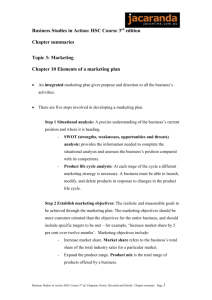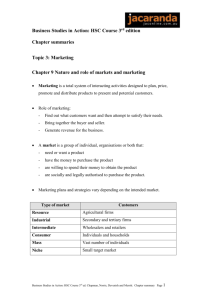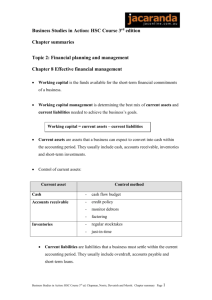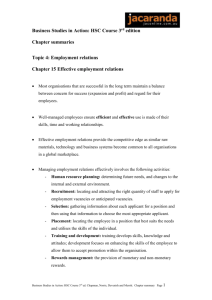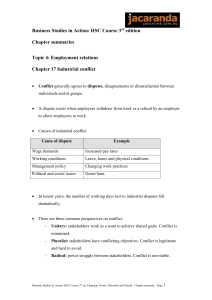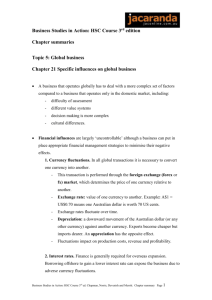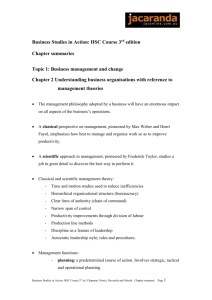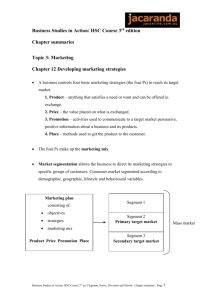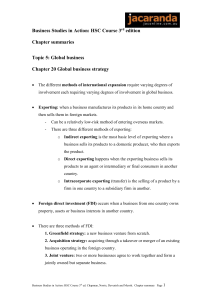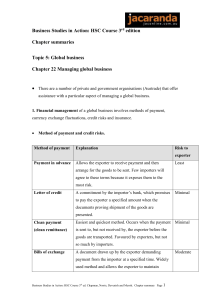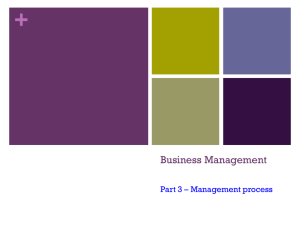Business Studies in Action: HSC Course 3rd edition
advertisement
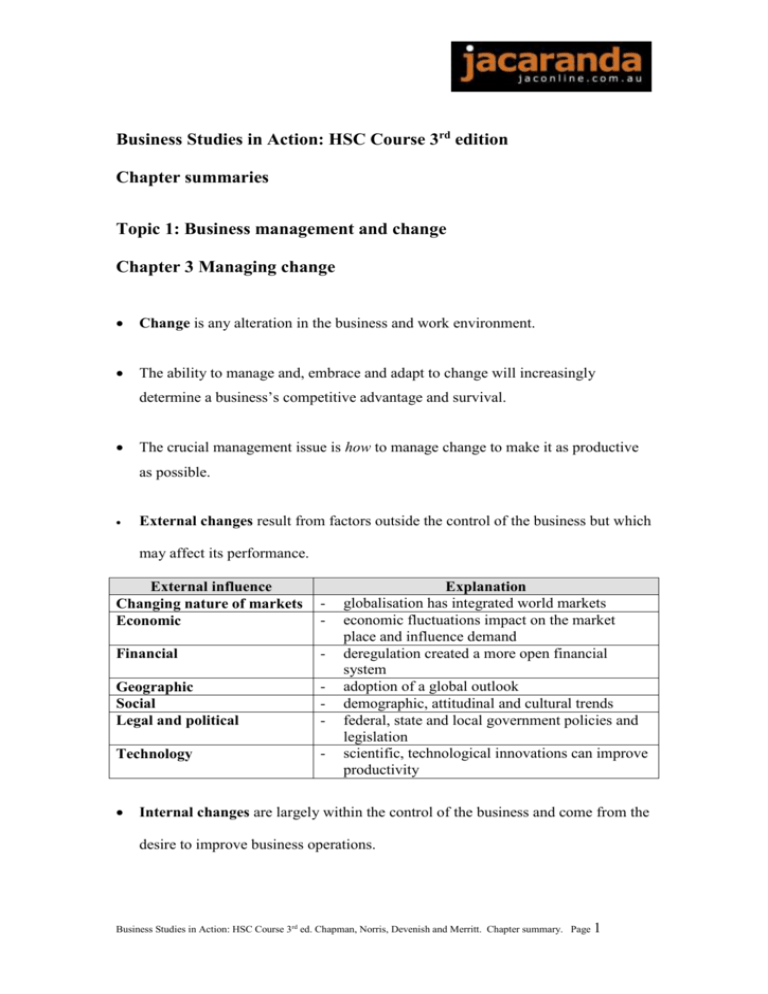
Business Studies in Action: HSC Course 3rd edition Chapter summaries Topic 1: Business management and change Chapter 3 Managing change Change is any alteration in the business and work environment. The ability to manage and, embrace and adapt to change will increasingly determine a business’s competitive advantage and survival. The crucial management issue is how to manage change to make it as productive as possible. External changes result from factors outside the control of the business but which may affect its performance. External influence Changing nature of markets Economic - Financial - Geographic Social Legal and political - Technology - Explanation globalisation has integrated world markets economic fluctuations impact on the market place and influence demand deregulation created a more open financial system adoption of a global outlook demographic, attitudinal and cultural trends federal, state and local government policies and legislation scientific, technological innovations can improve productivity Internal changes are largely within the control of the business and come from the desire to improve business operations. Business Studies in Action: HSC Course 3rd ed. Chapman, Norris, Devenish and Merritt. Chapter summary. Page 1 Internal influence Explanation e-commerce - New systems and procedures - New business cultures - Accelerating technology office equipment, computers, robotics used in the production process the use of the Internet to do business. Business-to-business (B2B0 and business-toconsumer (B2C). technology can revolutionise a business’s activities and operating procedures Workplace culture will need to become more flexible and adaptable. As the business environment changes, organisations examine and modify their business structures. Structural change refers to changes in how the business is organised – the organisational structure. The aim of these changes is to make business operations run smoothly, improve efficiency, streamline coordination and empower employees to make their own decisions. Management must respond to change by: - being flexible and innovative - constantly reassessing the business’s position - restructuring the business to maintain a competitive edge. The main structural changes include: - Outsourcing: contracting out non-core functions due to downsizing. - Flat management structures: reduced levels of management. - Strategic alliances: two or more businesses join together. - Network structures: subcontracted production and related business functions. Business Studies in Action: HSC Course 3rd ed. Chapman, Norris, Devenish and Merritt. Chapter summary. Page 2 Resistance to change can sometimes be common among businesses, managers and employees. The main reasons for resistance to change are: - Financial costs: new equipment; redundancy payments; retraining workforce; reorganising plant layout. - Inertia: lack of interest; refusal to cooperate by managers/employees; fear of failure. - Cultural incompatibility in mergers and takeovers: possible ‘culture clash’; different work practices. - Staffing considerations: de-skilling; acquiring new skills; loss of career prospects or promotional opportunities. The environment created by the manager can greatly affect employee acceptance of change. Manager needs to: - identify the need for change - set achievable goals. A change agent, is a person, or group of people, who act as a catalyst, assuming responsibility for managing the change process. Five steps to successful change: 1 Identify change issue. 2 Set achievable goals. 3 Create a culture of change: teamwork; change agent. 4 Implement the change. 5 Evaluate and modify the change as appropriate. Business Studies in Action: HSC Course 3rd ed. Chapman, Norris, Devenish and Merritt. Chapter summary. Page 3 Lewin force-field analysis: identify, analyse and balance the driving and restraining forces. The Lewin change process: - Unfreeze: employees made aware of the reasons for change (possible use of outside change agent) - Change: Implement changes. New skills and behaviours introduced. - Refreeze: Changed behaviour rewarded to make sure it lasts. A socially responsible business will attempt to achieve two goals simultaneously: maximising profit (double bottom line) and providing for the greater good of society (triple bottom line). Social responsibility: how well a business manages the social, environmental and human consequences of its actions. Ecological sustainability: production methods that conserve and protect the environment. Quality of working life: workplace practices that improve employees’ wellbeing. Technology: cushion its negative impact on employees. Globalisation/cultural diversity: manage multiculturalism and employee diversity. E-commerce: training of employees, privacy and security issues. Business Studies in Action: HSC Course 3rd ed. Chapman, Norris, Devenish and Merritt. Chapter summary. Page 4
